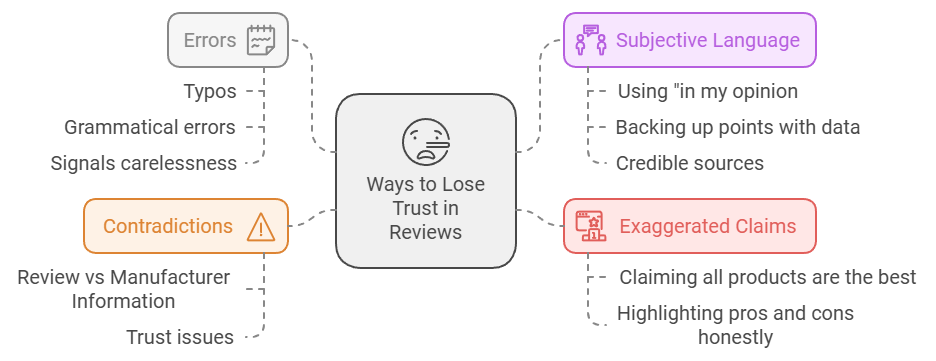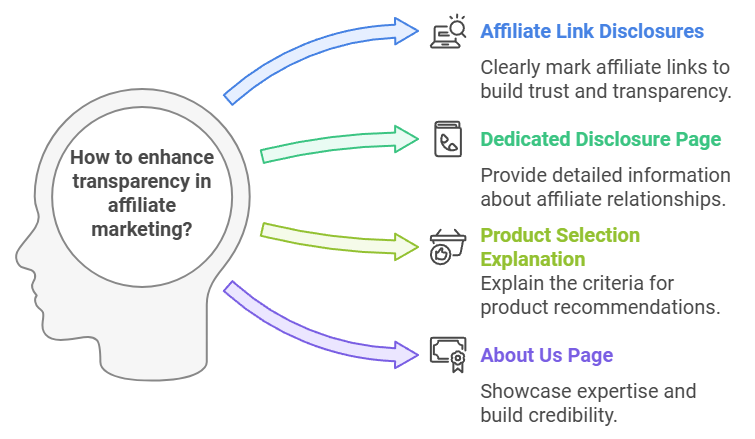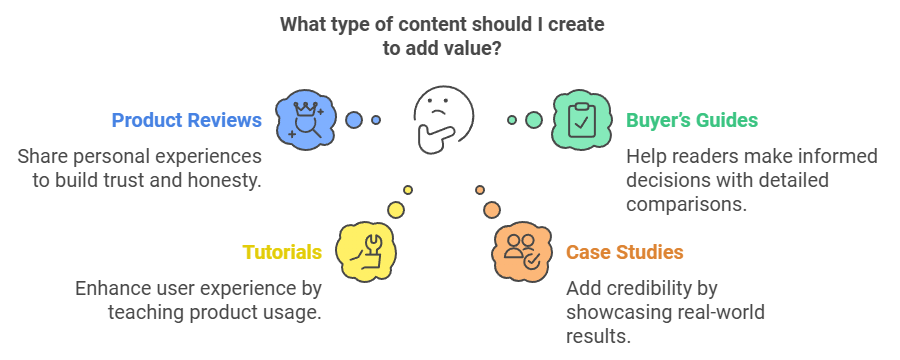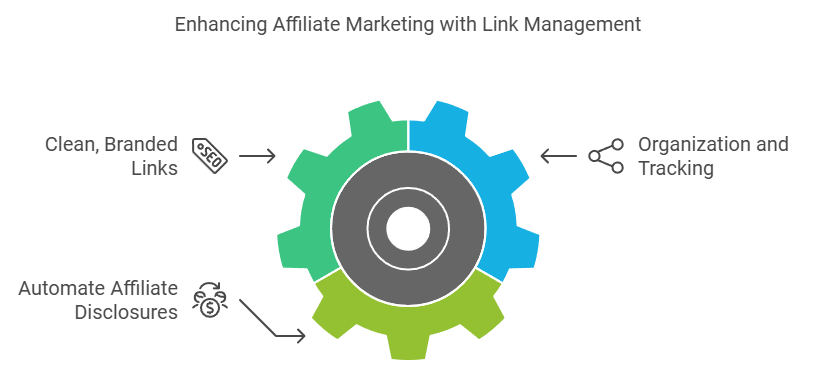WHY BUILDING TRUST IN AFFILIATE MARKETING IS YOUR SUPERPOWER (AND HOW TO LOSE IT FAST!)
When it comes to affiliate marketing, trust is everything. It’s your secret weapon—your superpower. If people trust you, they’ll not only follow your recommendations, but they’ll also come back for more. They might even tell their friends. And trust me, that’s when you start seeing real results—increased conversions, a loyal following, and long-term success. Sounds awesome, right?
But here’s the thing: trust is also super fragile. You could lose it faster than you can say “affiliate link.” And once it’s gone, it’s almost impossible to get back. So, let’s make sure you know how to keep it and, just as importantly, what not to do so you don’t lose it.
Why Trust is the Key to Affiliate Success
Think about it: when someone visits your site, they’re already placing a little bit of trust in you. They’re giving you their time and attention, hoping you’re going to guide them to something worthwhile. That’s a powerful position to be in, and if you respect it, the rewards are huge. The more people feel they can rely on you, the more likely they are to hit that “buy” button after reading your recommendation.
Trust is what makes the difference between someone simply scrolling through your content and someone actually converting. It’s what turns casual visitors into loyal readers who keep coming back because they know you’re looking out for them. And that means more clicks, more conversions, and more commissions for you.

How to Lose Trust (And Fast!)
Now, let’s talk about the pitfalls. Because even if you build trust, there are a ton of ways you can lose it—fast. Let’s avoid those, shall we? Here are some of the most common mistakes affiliate marketers make that end up eroding trust:
- Claiming every product is the “best.” If you say every single product is amazing, people are going to see right through it. Not every product can be the best. Be real. Highlight the pros and cons honestly.
- Contradictions between your review and manufacturer information. If someone reads your glowing review and then notices that the manufacturer says something completely different, guess who they’re going to trust? Spoiler alert: not you.
- Typos and grammatical errors. This might seem minor, but errors signal carelessness. If you didn’t care enough to proofread, why should anyone trust your judgment?
- Using subjective language like “in my opinion.” Facts build trust. Opinions can help personalize content, but overdoing it makes it seem like you’re just making things up. Back up your points with real data and credible sources whenever possible.
The key takeaway here is simple: protect the trust you build like it’s gold. Because in affiliate marketing, it pretty much is.
Looking for something else to read?
LAYING THE FOUNDATION: CREATING A TRUSTWORTHY AFFILIATE WEBSITE
If you want to succeed in affiliate marketing, the first thing you need is a trustworthy website. This is where people come to find answers, see your recommendations, and ultimately, decide whether or not they trust you enough to click on your affiliate links. So, it’s crucial to get this right from the start.
Projecting Professionalism Through Design
First impressions are everything, especially online. When someone lands on your website, you have just a few seconds to make them feel like they’re in the right place. That’s why professional website design is non-negotiable. Your site should look polished, easy to navigate, and visually appealing.
If you’re using a basic WordPress template, it’s time to make improvements. Investing in a custom logo and a professional theme shows your audience that you’re serious. It also helps you stand out from the thousands of other affiliate sites out there. Think about it—when was the last time you trusted a website that looked outdated or generic?
If you’re not sure where to start, take inspiration from successful competitors. Look at their color schemes, layout, and navigation. What draws you in? How do they present their information? Use those elements as a foundation but add your own unique touch to make it yours.
And remember, clarity is key. Use clear headlines that immediately tell your readers what they’re getting. High-quality featured images are a must, too—they add visual interest and help build trust. Make sure your content has a logical flow, especially your reviews. Guide your readers step-by-step so they know exactly what to do next.

Transparency in Action: Showcasing Your Integrity
Now that we understand the importance of professionalism in design, let’s talk about transparency. Being upfront with your audience isn’t just a good practice—it’s essential for building trust in affiliate marketing. People are smart; they know when they’re being sold to. The best way to keep their trust? Be honest about your affiliations.
Here’s how to do it:
- Affiliate Link Disclosures: Make sure every affiliate link is clearly marked. Don’t hide it—be proud of it. Let your audience know that, yes, you earn a commission, but it doesn’t cost them anything extra. This honesty can go a long way in showing that you’re in this to provide value, not just make a quick buck.
- Dedicated “Affiliate Disclosure” Page: Go a step further and create an entire page dedicated to disclosing your affiliate relationships. Link to this page from every individual disclosure, so people always have the option to read more about how you make money.
- “How We Choose Products” Section: Transparency isn’t just about disclosures. It’s also about showing people why you recommend what you do. Add a section explaining your selection process. Maybe you personally test each product, or perhaps you rely on extensive customer feedback—whatever it is, be open about it.
- “About Us” Page: This is where you get to showcase your expertise and experience. Tell your story—why should people trust your recommendations? Highlight your background, your passion for the niche, and any credentials that make you a credible source of information.

Craft Content That Screams “Value!”
The next step in building a trustworthy affiliate website is to deliver genuine value to your audience. And I mean real value—not just fluff that’s there to fill up space. People come to your site because they want answers, solutions, and insights. Give them that, and they’ll keep coming back. For example, I once wrote an in-depth buyer’s guide on outdoor gear, and I noticed a significant increase in returning visitors who appreciated the detailed information and transparency. This kind of genuine value builds lasting trust.
Here are some content formats that work wonders:
- In-depth Product Reviews: Don’t just list features—share your experiences, the good and the bad. Talk about how the product solved a problem for you or how it fell short in some areas. Honesty here is crucial.
- Informative Buyer’s Guides: These guides help your readers make informed decisions. Break down what to look for in a product, compare different options, and help them understand what they truly need.
- Tutorials and How-To Articles: Teaching your audience how to get the most out of a product is a great way to add value. It shows you care about their experience even after they’ve made a purchase.
- Case Studies: If you can show how a product or service has delivered results for someone (especially if that someone is you), it adds a ton of credibility to your recommendation.
When writing, always aim to include personal experiences. Talk about your own observations and use anecdotes to make the content relatable. And don’t forget to cite authoritative sources when you’re dealing with claims, especially in sensitive niches. This builds trust and reinforces that you’re not just making things up.
Key Takeaways
- First impressions matter: Invest in a professional website design and make sure your site looks trustworthy.
- Be transparent: Use affiliate disclosures, explain your selection process, and highlight your expertise.
- Deliver value: Create content that truly helps your audience, from honest reviews to in-depth guides and how-tos.
Next Step: Take a look at your website right now. Are you projecting the professionalism and transparency needed to build trust? If not, start by updating your website design to look more polished and adding clear affiliate disclosures. These simple changes can make a big difference in building trust with your audience.
BUILDING TRUST IN THE PRODUCTS YOU PROMOTE: PARTNERING WITH THE BEST
Success in affiliate marketing requires more than just a great website and content; it demands promoting products that people can trust. Building trust in the products you promote is all about partnering with reputable companies and showcasing why those products are worth your audience’s time and money. Let’s break down how to make sure you’re only recommending the best.
Aligning with Reputable Companies
First things first: if you want your audience to trust you, you need to partner with companies that are already trusted. If you’re promoting a product from a brand that has a history of poor customer service or low-quality goods, that reflects directly on you. Your audience will lose faith in your recommendations, and that means fewer conversions and fewer repeat visitors.
To avoid this, always do your homework. Research the company’s reputation. Look for reviews from both customers and other affiliates. Are people generally happy with their experience? How does the company handle complaints? You want to align yourself with brands that value quality and customer service—brands that go above and beyond to make their customers happy. Because when your audience sees that you’ve taken the time to vet the products you promote, it builds their trust in you as an affiliate.
Spotlight on Customer-Centric Features
Another powerful way to build trust is to highlight the customer-centric features of the products you promote. People want to know that they’re making a risk-free decision when they buy something based on your recommendation. For example, they might worry about getting stuck with a faulty product or dealing with poor customer support, which is why highlighting risk-reducing features is crucial. That’s where features like money-back guarantees, free trials, and excellent customer support come into play.
- Money-Back Guarantees: When a product comes with a money-back guarantee, it shows that the company is confident in what they’re offering. It also reassures your audience that if things don’t go as planned, they won’t be stuck with a bad product.
- Free Trials: If a product offers a free trial, that’s a great opportunity for your audience to test it out without committing financially. This can significantly lower the barrier to entry and make them more likely to give it a shot.
- Excellent Customer Support: Companies that offer multiple ways to get in touch—like live chat, email, and phone support—demonstrate that they care about their customers. Make sure to mention this when you’re promoting a product. People are far more likely to buy when they know that help is just a click or a call away.
These customer-centric features show that the company puts their customers first, and when you highlight these features, your audience will feel more comfortable making a purchase.
Leveraging Trust Badges and Accolades
Visual trust signals are another fantastic way to build trust. It’s well known that people respond to visual cues, especially when it comes to verifying legitimacy of the product or company you’re promoting. This is where trust badges and accolades come into play.
- Trust Badges: Trust badges from reputable organizations like the Better Business Bureau (BBB), PayPal Verified, or security badges for secure transactions are all ways to show that a company is credible. Adding these visuals to your content can make your audience feel more secure about their purchase.
- Awards and Recognition: If the company or product you’re promoting has received any awards or recognition, be sure to highlight these accolades. Whether it’s an industry award or a “best in category” recognition, these accolades add a layer of credibility that can help sway your audience to trust your recommendation.
Key Takeaways
- Partner with trusted brands: Do your research and only promote companies known for quality and good customer service.
- Highlight customer-centric features: Money-back guarantees, free trials, and accessible customer support all help build trust.
- Use visual trust signals: Trust badges and accolades add credibility and make your audience feel secure.
Next Step: Take a moment to evaluate the products you’re promoting. Are they from companies that are known for quality and customer satisfaction? Are you highlighting the features that help build trust? Start by evaluating product reviews and customer feedback to ensure quality and satisfaction. If not, it’s time to make some changes to ensure you’re only recommending the best.
OBJECTIVITY = SALES: HOW TO WIN HEARTS (AND WALLETS) WITH HONEST REVIEWS
When it comes to affiliate marketing, honesty really is the best policy. Your audience can tell when you’re being genuine—and when you’re not. If your audience senses you’re only interested in making a sale, their trust will disappear. But when they see that you’re giving them the whole picture, both good and bad, they’re far more likely to take your recommendation seriously and even hit that “buy” button. Let’s talk about how objectivity can win over hearts—and wallets.
The Power of Pros and Cons
One of the easiest and most effective ways to show your audience that you’re being honest is by listing both the pros and cons of the products you’re promoting. No product is perfect, and pretending that it is can make your review come off as disingenuous. By acknowledging a product’s drawbacks, you’re setting realistic expectations, which helps reduce potential returns and builds trust in your recommendations.
For instance, let’s say you’re reviewing a fitness tracker. Sure, you can talk about its awesome features like heart rate monitoring and GPS tracking, but also mention that its battery life might only last two days, which could be a downside for some users. This kind of transparency shows your audience that you care more about giving them the full story rather than just making a sale.
To make this work even better, consider presenting pros and cons in a table format. For example, you could create a table with columns for ‘Pros’, ‘Cons’, and ‘Who It’s Best For’. This makes it easy for your readers to quickly digest the information and see if the product meets their needs. Plus, it visually reinforces your commitment to being thorough and balanced.
“Best For” Categories: Catering to Diverse Needs
Another great way to boost trust and provide genuine value is by creating “Best For” categories in your reviews. Not every product is perfect for everyone, and by grouping products into categories like “Best for Anxiety”, “Best for Beginners”, or “Best for Budget-Conscious Buyers”, you can help your audience find exactly what they need without feeling like you’re pushing a one-size-fits-all solution.
This approach reduces bias by acknowledging that different products serve different needs. It also broadens your reach—now you’re not just speaking to one segment of your audience, but to multiple groups with varying needs. This enhances your helpfulness and makes your reviews more relatable.
Don’t Forget the Budget Option!
Not everyone is looking for the premium, top-of-the-line product. That’s why it’s so important to always include a budget option in your recommendations. Including a cheaper, less-than-perfect product gives your audience more choices, and it also makes your top picks seem more justified. After all, if you’re not only showing the best but also the “good enough,” it adds credibility to your selection process.
For example, if you’re recommending noise-canceling headphones, you might include a premium option with all the bells and whistles, but also a budget pick that still does a decent job for someone who doesn’t want to break the bank. This strategy not only shows that you’re considering everyone’s financial situation, but it also makes your high-end recommendations appear more thoughtful and well-rounded.
Ditch the Hype: Facts Over Fluff
When it comes to reviews, it’s tempting to use big, flashy words like “amazing” or “incredible”, but these superlatives can often do more harm than good. Why? Because they sound like hype. Instead, focus on providing concrete details and evidence to build trust.
For instance, instead of saying, “This product is amazing!” try something like, “This product has a 10-hour battery life, which is ideal for long workdays or travel.” Specific, fact-based information helps the reader make an informed decision and trust your expertise. By grounding your reviews in solid facts rather than subjective praise, you’re showing your audience that you genuinely want them to make the best decision for their needs.
Key Takeaways
- List Pros and Cons: Highlighting both the positives and negatives makes your reviews more trustworthy and helps set realistic expectations.
- Create “Best For” Categories: Cater to different needs by suggesting products that suit various preferences, which helps broaden your audience reach.
- Include Budget Options: Always add a more affordable choice to show consideration for different budgets and make your top picks more credible.
- Focus on Facts, Not Hype: Use concrete details and avoid generic superlatives to provide genuine value and build trust.
Next Step: Review your current product recommendations. Are you being objective enough? Make sure you’re listing the pros and cons, using “Best For” categories, and including a budget option to cover all your bases. Your readers will appreciate your honesty—and that will pay off in the long run.
BUILDING TRUST BEYOND THE PRODUCT: CREATING A CUSTOMER-CENTRIC EXPERIENCE
It’s time to go beyond just the product. To truly win the hearts of your audience, you need to show them that they’re more than just a sale. This means creating an experience that makes them feel valued, heard, and secure every step of the way. Let’s explore some key ways to create a customer-centric experience that fosters trust and loyalty.
The Importance of a Stellar Contact Page
First things first: if you want people to trust you, they need to know they can reach you easily. A well-designed and accessible Contact page is an essential part of building trust in affiliate marketing. This page should be easy to find—no one should have to dig around your site just to get in touch.
Include multiple contact options: an email address, a contact form, and social media links. By providing different ways for your audience to reach you, you’re demonstrating that you’re accessible and genuinely interested in hearing from them. This not only builds trust but also shows that you’re ready to support them if they have questions or concerns.
Think of it this way: a strong Contact page is like having an open door. It tells your readers, “I’m here, and I care about what you have to say.” That’s how trust begins.
Responsiveness = Respect: Be Prompt and Helpful
Imagine this—you send a question to a business, and days go by without a response. How does that make you feel? Probably not great. Responsiveness is key when it comes to building trust. When someone reaches out to you, be prompt and professional in your response.
But don’t just stop at answering their question. Go the extra mile—provide detailed answers, include additional resources, or even suggest other articles they might find helpful. By doing this, you’re showing that you truly care about their needs and are willing to put in the effort to help them out.
Being responsive is about more than just replying quickly; it’s about showing respect for your audience’s time and concerns. And when you do this, it reinforces your commitment to customer satisfaction and makes your audience feel valued.
Social Proof: Show Them the Love
People trust people. That’s why social proof is so powerful in building trust in affiliate marketing. Your audience wants to know that others have had a positive experience with the products you’re promoting—and that’s where social proof comes in.
Go beyond simple testimonials. Showcase positive reviews from external platforms like TrustPilot or Google Reviews. These are unbiased sources that your readers can trust, and they go a long way in proving that the products or services you recommend are worth their time and money.
Consider using tools like Smash Balloon Reviews Feed Pro to automatically display reviews on your site. By highlighting the experiences of other customers, you’re making it easier for your audience to trust your recommendations.
Privacy Matters: Building Trust Through Data Respect
In today’s privacy-conscious world, respecting user data is non-negotiable. If you want to build trust, you need to show your audience that their information is safe with you. This starts with a clear and concise Privacy Policy page that outlines what data you collect, why you collect it, and how you use it.
Make sure your privacy policy is easy to find and written in simple language—no one wants to read through legal jargon just to understand how their data is being used. Additionally, if your audience includes European visitors, GDPR compliance is a must. This means using a cookie consent banner and potentially a GDPR checkbox on forms to ensure that you’re fully transparent about data collection.
By demonstrating respect for user data, you’re sending a powerful message: you care about their privacy as much as they do. And that’s a major trust builder.
Key Takeaways
- Have a Strong Contact Page: Make sure your audience can easily reach you by providing multiple contact options.
- Be Responsive and Helpful: Answer inquiries quickly, go the extra mile, and show respect for your audience’s time.
- Leverage Social Proof: Use reviews from trusted platforms to show that others have had positive experiences.
- Respect Privacy: Have a clear Privacy Policy and ensure GDPR compliance to build trust through data respect.
Next Step: Review your website and ensure you’re creating a customer-centric experience. Is your Contact page easy to find? Are you responding to inquiries promptly and going above and beyond for your audience? By making these changes, you’ll create an environment where your readers feel valued—and that’s the key to long-term trust.
LEVEL UP: TOOLS AND RESOURCES FOR ETHICAL AFFILIATE MARKETING
If you want to level up your affiliate marketing game, you need the right tools in your arsenal. When it comes to ethical affiliate marketing, having the right resources can make all the difference in building trust and ensuring compliance. Let’s dive into some of the best tools and resources that can help you create a transparent, trustworthy affiliate business.

Tame Those Links! Affiliate Link Management Tools
Affiliate links are the backbone of what we do, but let’s face it—long, messy links don’t inspire much confidence. That’s where affiliate link management tools come in. Tools like Pretty Links can help you create clean, branded, and trustworthy links that not only look good but also build trust with your audience.
Here are some benefits of using link management tools:
- Clean, Branded Links: Link cloaking allows you to take those long, ugly affiliate URLs and turn them into something more attractive. Instead of showing a long string of random characters, you can create branded links like yoursite.com/recommended-product. This makes your links look more professional and helps reassure your audience that they’re clicking on something safe.
- Organization and Tracking: Managing multiple affiliate programs can get messy fast. Tools like Pretty Links or ThirstyAffiliates make it easy to organize and track your links in one place. This means you’ll know which links are performing well and which ones aren’t, allowing you to fine-tune your strategies.
- Automate Affiliate Disclosures: Transparency is key in ethical affiliate marketing, and link management tools can even help you automate affiliate disclosure statements. This ensures that every link includes the proper disclosures, so your audience knows exactly what to expect—and it keeps you compliant with regulations.
Other Resources for Ethical Affiliate Marketing Success
There’s more to ethical affiliate marketing than just managing links. Here are some other resources that can help you stay compliant, build trust, and improve your marketing strategies:
- FTC Compliance Guides: Staying compliant with the Federal Trade Commission’s (FTC) guidelines is a must for ethical affiliate marketers. Check out the FTC’s official guide on endorsements and testimonials to ensure you’re always playing by the rules. You can find the guide here.
- Reputable Affiliate Networks: Choosing the right affiliate networks can have a huge impact on the quality of offers you promote. Look for reputable networks like ShareASale, CJ Affiliate, and Impact. These networks vet their merchants, so you can be confident that you’re promoting high-quality, trustworthy products.
- Courses and Communities: Want to keep growing as an affiliate marketer? Consider joining courses or communities focused on ethical affiliate practices. Platforms like Udemy and Skillshare offer courses that can help you stay up-to-date on best practices, while communities like Affilorama or the AffiliateFix forum provide a space to connect with other marketers, ask questions, and share insights.
Key Takeaways
- Use Link Management Tools: Tools like Pretty Links help create clean, branded links, track link performance, and automate affiliate disclosures, which builds trust with your audience.
- Stay Compliant: Refer to the FTC’s guides to make sure you’re following regulations and maintaining transparency in your marketing.
- Join Reputable Networks and Communities: Promote products through trusted networks and continue your education through courses and community forums to stay ethical and effective.
Next Step: Start by tidying up your affiliate links using a management tool like Pretty Links. Then, make sure you’re familiar with FTC regulations and consider joining a community of affiliate marketers to keep learning and improving. Ethical affiliate marketing isn’t just good practice—it’s the key to building a loyal, trusting audience that will keep coming back.
CONCLUSION: BUILDING TRUST IN AFFILIATE MARKETING (AND THEY WILL COME AND BUY!)
Throughout this post, we’ve discussed many key points, and if there’s one thing I want you to take away, it’s this: trust is the foundation of affiliate marketing success. Without it, all the fancy tools, well-crafted content, and strategic partnerships won’t get you far. But with trust, you’re building something that lasts. It keeps your audience coming back, clicking, and converting.
The strategies we’ve discussed—from honest reviews to customer-centric experiences—are all about building trust with your audience. It might take time, and it certainly requires consistent effort, but the payoff is immense. A loyal following doesn’t just drive sales—it creates advocates who will recommend you to others, amplifying your reach and impact.
So, let’s make it actionable. Take a look at the strategies we’ve gone over and pick one or two to start implementing today, such as optimizing your contact page or creating more transparent reviews. Maybe you’ll begin by optimizing your contact page or diving into link management tools to tidy up your affiliate links. Whatever it is, take that first step towards a more ethical, trustworthy affiliate marketing approach.
And I’d love to hear from you! Drop a comment below and share your experiences with building trust in affiliate marketing. What’s worked for you? What challenges have you faced? Let’s keep the conversation going and learn from each other’s journeys.
Frequently Asked Questions (FAQs) About Building Trust in Affiliate Marketing
To build trust in affiliate marketing, focus on providing honest reviews, aligning with reputable brands, and ensuring transparency. Use clear affiliate disclosures, offer genuine value, and always put your audience’s needs first. Consistent and ethical practices are key to creating a loyal and trusting audience.
Transparency is crucial because it helps your audience understand your relationships with the products you promote. By clearly disclosing affiliate links and sharing your honest opinions, you build credibility and maintain your audience’s trust, which is essential for long-term success in affiliate marketing.
Affiliate link management tools like Pretty Links and ThirstyAffiliates are great for creating clean, branded links, organizing and tracking links, and automating affiliate disclosures. These tools not only make your links more professional but also build trust with your audience by ensuring transparency.
Social proof, such as showcasing positive reviews from platforms like TrustPilot or Google Reviews, helps build trust by showing that others have had a good experience with the products you promote. It adds credibility to your recommendations and reassures your audience that they are making the right choice.
Improving user experience involves creating a well-designed contact page, being responsive to inquiries, and respecting user privacy. Make sure your website is easy to navigate, provide multiple ways for your audience to contact you, and have a clear privacy policy to show that you value their trust and data.
Here are some valuable links that you can use as outgoing links on your blog about building trust in affiliate marketing:
- Building Trust with Your Audience: The Affiliate Marketer’s Guide
This article discusses essential strategies for cultivating trust with your audience, emphasizing authenticity, value-driven content, and engagement. Read more here 1. - How to Build Trust and Credibility in Affiliate Marketing – Affiverse
This resource outlines tactics for building trust, including providing valuable content, ensuring transparency, and engaging with your community. Explore the article 2. - How To Build Trust And Credibility In Affiliate Marketing – Forbes
This piece offers insights into aligning brand values with audience expectations and maintaining transparency in affiliate partnerships. Check it out 3. - How to Build Trust and Credibility in Affiliate Marketing – TORO Advertising
This article emphasizes the importance of ethics, transparency, and customer engagement in building trust within affiliate marketing. Read the full article 4. - How to Build Trust and Credibility with Your Affiliates – Matt McWilliams
This guide provides strategies for affiliate managers to build trust through clear communication and community building among affiliates. Learn more here 5. - How to Build Trust with Ethical Affiliate Marketing Techniques – Pretty Links
This article discusses ethical practices that enhance credibility in affiliate marketing, such as clear disclosures and honest promotions. Discover more 6.
These resources can help provide further insights and strategies for your readers interested in enhancing trust in their affiliate marketing efforts.











Leave a Reply